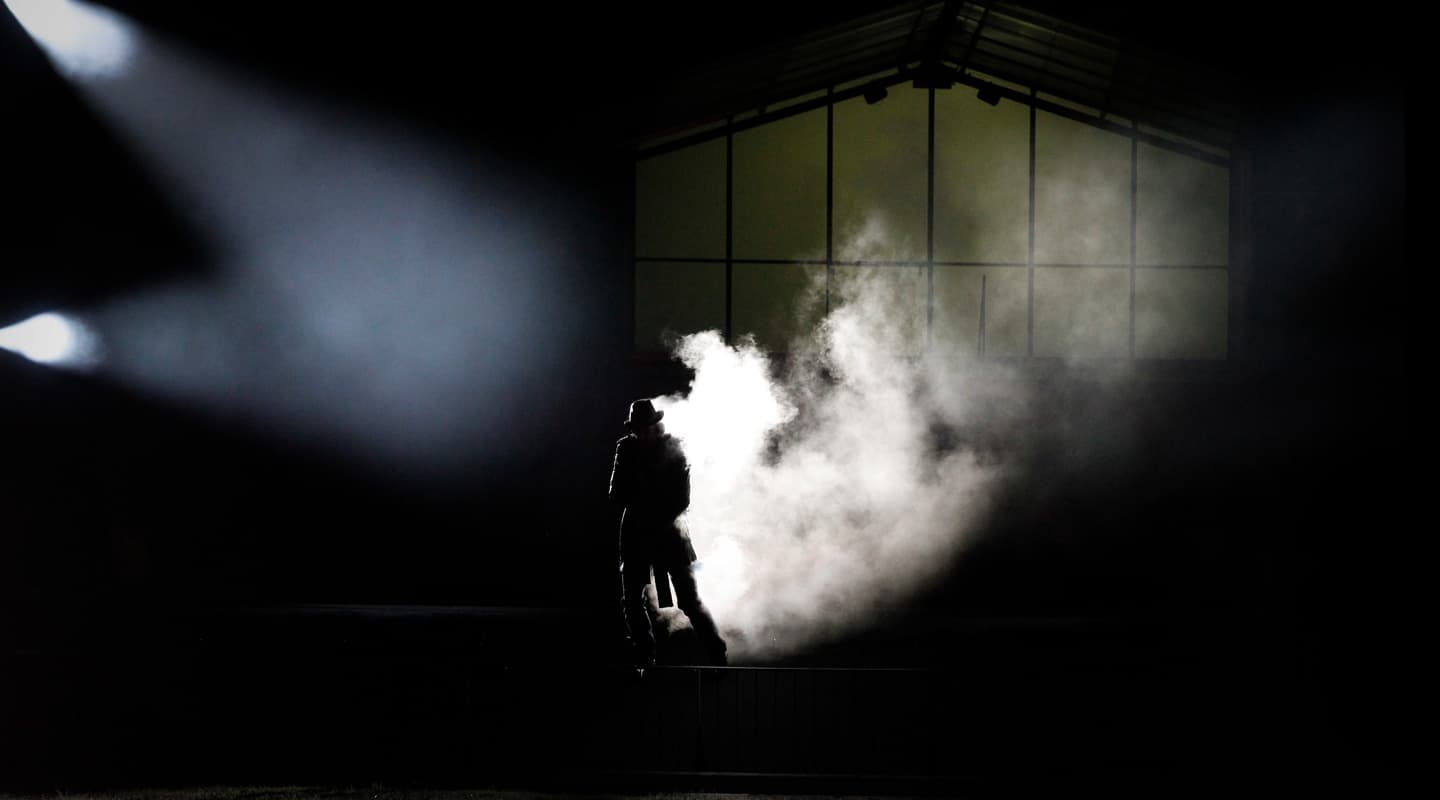
Haven’t Got The Foggiest?
A guided tour of atmospheric effects.
Text:/ Marcus Pugh
Q: Why don’t we do gigs on the moon?
A: There’s no atmosphere. This may be a corny gag, but atmosphere and atmospherics are the all-too-often overlooked elements of the entertainment game. Well, what exactly are atmospherics? I like to think of them as the family of effects that occur in the air around the performers and the audience. These can be broken down into three basic groups: Haze, Smoke/Fog, and Low Fog. Before all the special effects specialists out there throw down their magazines and take to the internet to abuse me [the writer can be found on Twitter @poodawgma – Ed.], there are indeed plenty of other atmospheric effects, but in this article we’ll concentrate on these three main classes of effect, where they are most effective.
SMOKE WITHOUT FIRE?
Throughout the millennia mankind has used the by-product of fire (smoke) as a form of communication in spiritual rituals and to help create a sense of atmosphere. Later in history as theatre came to prevalence, smoke started to be integrated into performances with reports of it being used as far back as the late sixteenth century in the Globe Theatre, London. As chemistry and our understanding of materials advanced, so did our ability to generate smoke without actually setting something alight. While methods of making ‘smoke’ were initially developed and refined to create smoke, haze and low fog for theatre, the effects were soon appropriated for motion pictures, television, and indeed anywhere the appearance of low lying fog was required or the illusion of fire, or even just where the lighting needed to look cooler. Atmospheric effects can now be found in every facet of entertainment including nightclubs, theme parks, arena spectaculars and cruise ships. Some of these technologies have even made their way outside the entertainment sphere to be employed in such areas as the construction industry, air conditioning, security, military applications and emergency services training.
HAZY THOUGHTS
We’ll start our tour with haze, which, while not being the earliest-used effect, is certainly now the one most commonly used in entertainment. Haze refers to an unobtrusive, and for the most part, invisible cloud made by finely dividing a material and dispersing it widely throughout the air. It can be used to create a sense of mood, and more importantly, to give a defined form to lighting effects. Haze is a must for having beams or fingers of light on rock shows and also when lasers are in use. By providing a mostly-transparent medium in the air, haze defines these beams through the air above the audience and stage. Rock ‘n’ roll lighting designers are often overheard to say: “when there’s no haze there’s no light”. Haze gives the lighting or laser designer another plane to work on.
There are two main families of hazers: those that utilise a glycol and water-based fluid and those that crack a mineral oil-based fluid. Each of these fluids has their own advantages and drawbacks.
Traditionally, oil-based hazers (usually known as crackers) atomise or ‘crack’ the fluid into microscopic particles light enough to be suspended in the air. The smaller this particle size, the smoother the haze, and the less likely it is to ‘clump’. An oil-based haze can be made as simply as by pushing bubbles of high pressure air through a mineral oil. This lifts the smallest particles out of the oil, suspending them as an aerosol which can then be blown out into the performance area. As air compressors are inherently noisy, the high-pressure gas can also be supplied from cylinders. Some more advanced oil-based hazers put the oil through a heat-exchanger then force the fluid through a tightly-constricted nozzle which mechanically shatters the particles to a super small size. The problem with an oil-based haze is, given enough volume used over long periods, it settles and the oil condenses, leaving an oily residue on surfaces like the tops of lighting bars and the optical systems of luminaires and projectors. This can also lead to problems with air conditioning systems and have been banned in some venues.
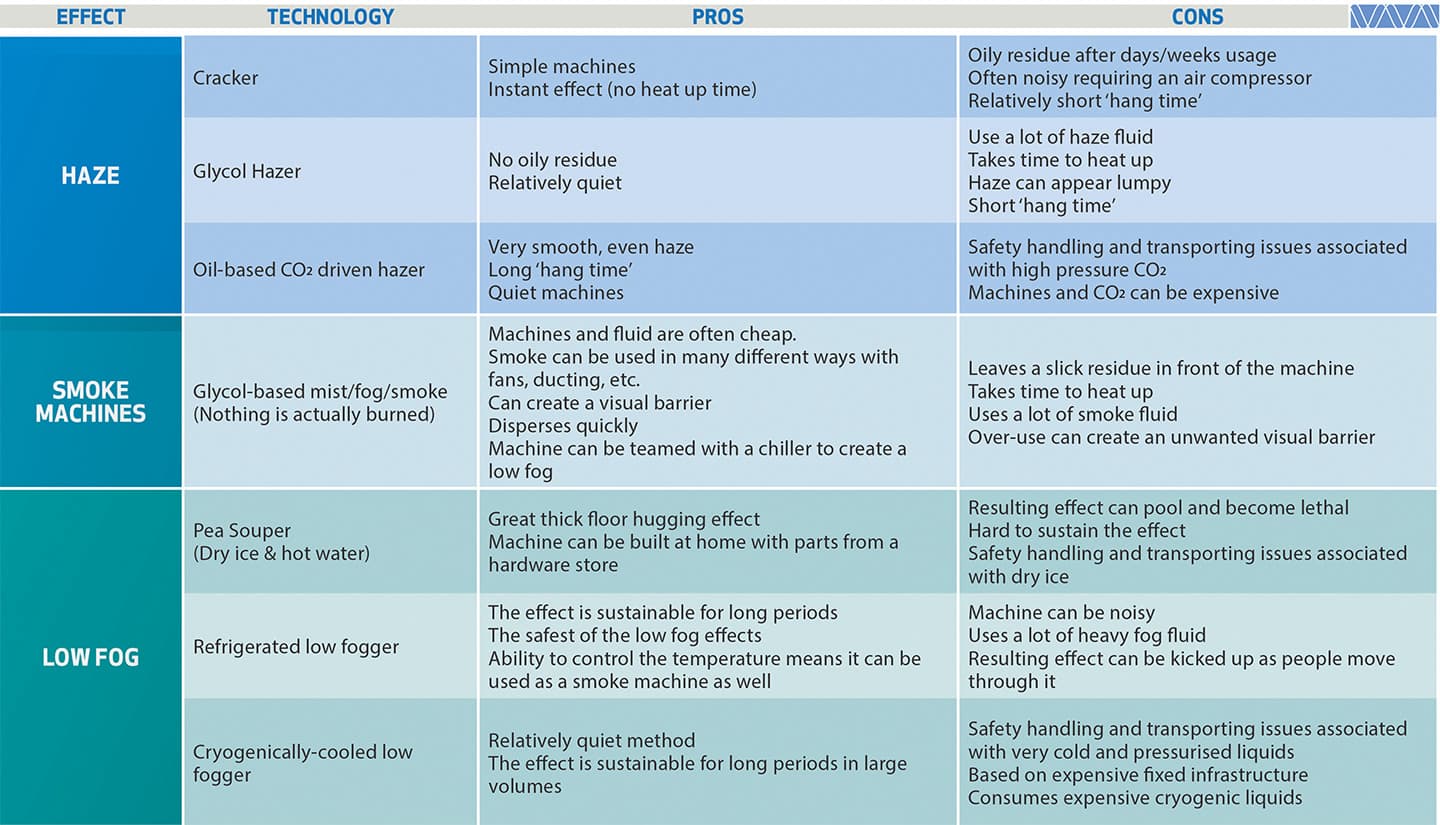
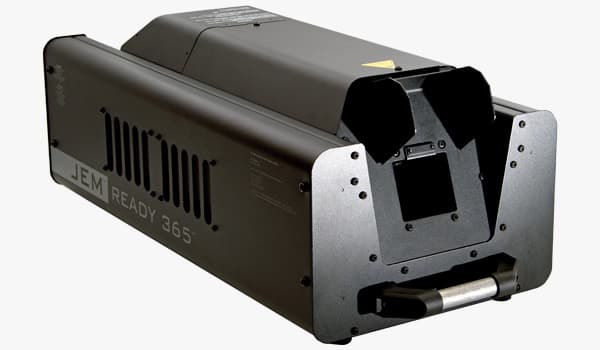
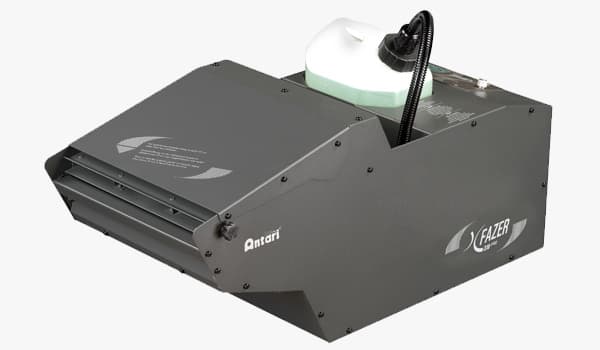
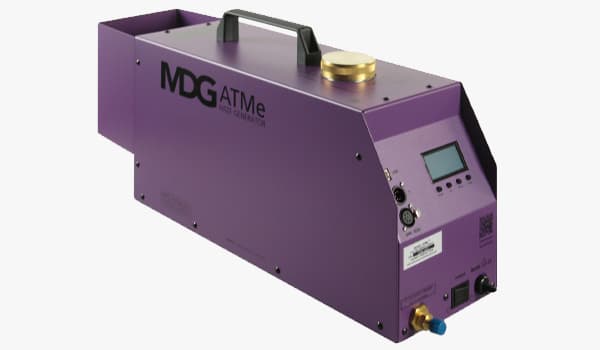
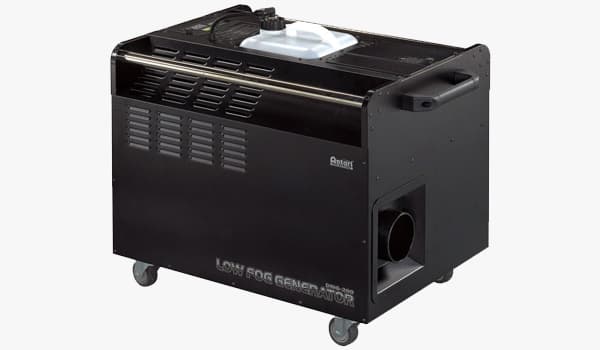
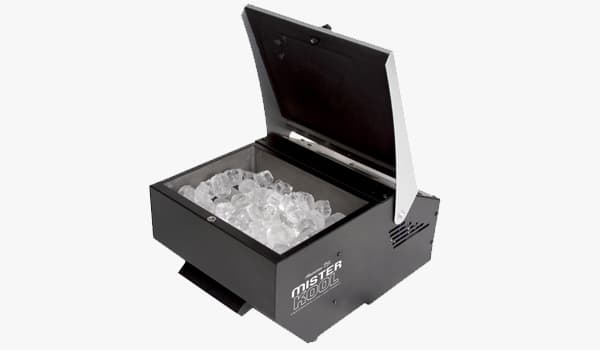
OILS AIN’T OILS
Glycol-based hazers, which are relatively new in the market place, have risen in popularity because they are generally quieter machines and do not leave the same oily residue. They create their effect in a similar way to smoke machines. The fluid is pumped through a heat exchanger then through an ultra-fine nozzle before being dispersed into the performance space by a fan or blower. By adjusting the pump pressure and fan level remotely (via DMX512) you can adjust the volume, density and area it covers. The main issue with glycol-based hazers has been that due to its larger particles, the haze is neither as uniform (smooth) as the oil-based version nor does it hang in the air as long. Recently, we’ve begun seeing the arrival of non-oil-based products which challenge these perceptions.
No matter which way you choose to make your haze, or from what fluid, a hazed venue will always take light better. A well-hazed room can make an average lighting rig look great. As with any of these effects always make sure the venue is aware that you’re using atmospherics (avoid using the actual word ‘Smoke’ as it tends to freak out the uninitiated) and make sure the proper procedures have been followed to ensure you don’t have a surprise visit from your local fire brigade, because ‘smoke’ detectors are actually particle detectors, and they have a tendency to be a bit too literal.
SMOG
Smoke or fog refers to effects that create a dense cloud, which unlike haze, is engineered to disperse relatively quickly. These effects are generally used to give the impression of a fire or to obscure the vision. The modern fog effect is produced by running a glycol-based fluid through a heating block which vaporises the fluid into a thick cloud. The resulting smoke is pumped out through a nozzle. The fog can be adapted into many different ‘looks’ with the use of fans, ducting or a smoke curtain tube. The disadvantages of smoke or fog is that it takes a deft hand to get the mix right between making a small puff and creating a giant rolling fog that completely obscures vision of the stage.
For all atmospheric effects, even slight air flow and temperature changes can dramatically affect the result. A smoke cue that works beautifully one night can completely go awry the next because the air conditioner is running harder due to more audience in the auditorium, or because someone has left an auditorium door slightly ajar.
As the fog machine technology has improved other industries have adopted them. The construction industry often uses fog machines to test water pipe joints for leaks before pressurising them, in addition to the obvious use of testing smoke alarms. The military has used large-scale fog machines for training, obscuring troop movements and even to test the air-tightness of submarines in dry dock. There are even security systems that utilise fog machines to fill a compromised area in a building with fog to terrify and disorient intruders.
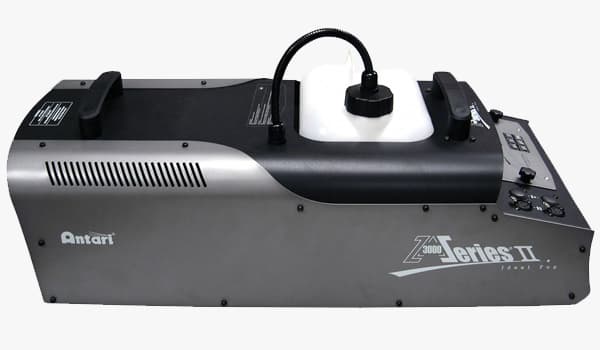
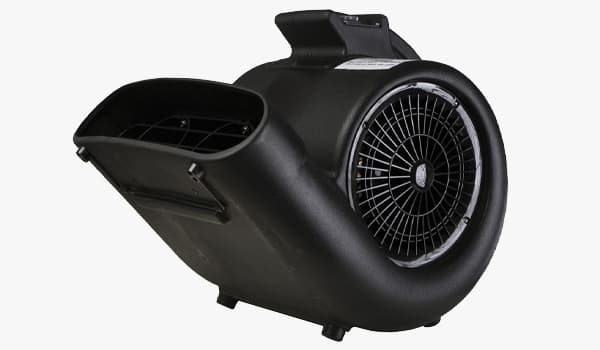
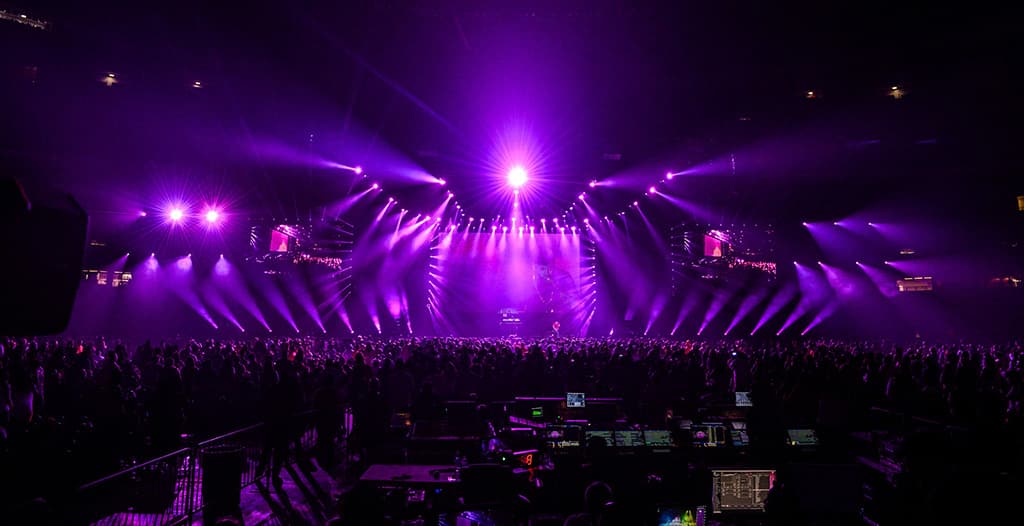
GETTING THE LOW DOWN
Low fog is the most spectacular of the atmospheric effects but is also the hardest to achieve and even harder to perfect. The traditional way to achieve a floor-hugging fog effect has been to introduce dry ice (frozen carbon dioxide, temperature -78.2°C) to boiling water in a machine known as a ‘pea souper’ (a product name still used by manufacturers). The vapour from the boiling water condenses around the cold CO² gas, which is denser than air, producing a low lying cloud of steam.
This method has a number of drawbacks. The fog accumulates in low-lying areas (such as the orchestra pit, the under-stage and even the stalls seating) displacing the breathable air and causing asphyxiation, which can result in a loss of consciousness or even death. This method is also hard to sustain for long sequences, as the dry ice chills the boiling water and thus reduces the output of fog. Venues that use a lot of CO² effects are now being fitted with monitoring systems to prevent accidents.
There are also issues with handling and transporting dry ice. I once nearly passed out because I was driving around in a compact car with a back seat full of eskies of dry ice on a hot day. The dry ice sublimated and the car slowly filled with CO². Luckily I noticed it was getting hard to breath and cracked a window. [And I once detuned the entire string section of a large pit orchestra with the water vapour from a very slightly heavy-handed fog cue – Ed]. Always ask for advice and know the rules and risks when it comes to working with atmospherics.
Another variation on this process, which has been ramped up to industrial scale for big, long-running productions, is to use a commercial boiler (under the stage or outside the venue) for the steam, and liquid nitrogen (-196°C, stored in big industrial cryogenic tanks, under the stage or outside the venue) as the denser-than-air coolant to condense the steam and keep the fog cool and low. The effect is the same as the old pea-souper, but the output can be sustained indefinitely at high levels (ie. until the cryogenic gas tanks are empty). Cold nitrogen gas also displaces the warmer oxygen-bearing air, producing slightly-lower risks of asphyxiation in low-lying areas. High pressure steam boilers and cryogenic storage and materials handling are areas requiring expertise not usually found on show production teams.
LEAVING THE AGE OF STEAM
Over the last couple of decades, modern fog-making technology has enabled the development of low foggers that have alleviated many of these issues. Many of these machines produce their fog using fairly standard glycol-based high-volume fog/smoke technology and a long-persistence fog fluid. This is transformed into low fog by chilling the output to make it denser than the surrounding air. Chilling methods include pumping the fog through an industrial refrigeration unit (air conditioning chiller) or through a heat-exchanging chamber filled with either dry ice, or if you need a long duration effect, liquid nitrogen or liquid CO². All of these methods have their problems, refrigeration plants are, heavy, noisy and power hungry, while transporting and storing cryogenic liquid is quite hazardous, and liquid CO² (which only exists at pressures exceeding five times atmospheric) can be more troublesome than in its frozen state.
Smoke machines, hazers, crackers, pea soupers and low foggers come in all different shapes and sizes to meet your atmospheric needs. While each as their advantages and disadvantages my advice would be to do your research, test, then test again until you get it right, but expect to be surprised because atmospherics are a capricious beast.








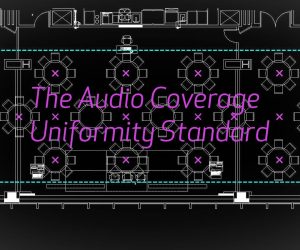






RESPONSES